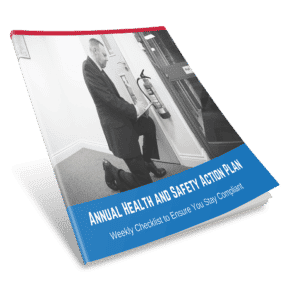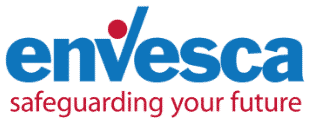Exploring the Significance and Responsibilities of the Health and Safety Regulations
Health and safety compliance is an essential element of running any successful business. From retail to agriculture, hospitality to manufacturing and all other industry sectors, it’s essential that you’ve got the policies, procedures and protocols in place to provide a healthy and safe working environment.
Why is health and safety compliance important?
As a business owner, you have a legal responsibility to keep your employees, customers, subcontractors and anyone else who comes into contact with your company free from harm. When you get health and safety compliance right, you reduce the risk of injury or even death.
Legal Obligations of Health and Safety
Whether you’re just starting out or your business has been up and running for some time, you should know your legal obligations for health and safety compliance.
Here’s an overview of the most important guidelines and regulations to refresh your mind…
The Health and Safety at Work etc. Act, 1974 (HSWA)
The HSWA is the primary piece of legislation that sets out your general duties as an employer to protect the health, safety and welfare of your staff and others. The four primary objectives of the HSWA are to;
1.Develop a health and safety policy.
2. Provide adequate training and procedures to work safely.
3. Keep the working environment safe.
4. Maintain equipment, machinery, etc.

Display Screen Equipment Regulations, 2002 (DSER)
If any of your employees work with display screens, laptops, touch screens or other similar display screen equipment for an hour or more, you need to adhere to DSE regulations. To adhere, you should…
- Perform a DSE risk assessment.
- Reduce any risks identified.
- Provide regular breaks
- Arrange and pay for eye tests if requested.
- Provide DSE training.
Personal Protective Equipment Regulations, 2002 (PPER)
Personal protective equipment includes hard hats, masks, goggles, etc., worn in the workplace to minimise exposure to substances that may cause harm. If a risk assessment identifies the need for PPE, you must provide it for free.
Manual Handling Operations Regulations, 1992 (MHOR)
MHOR defines manual handling as “… any transporting or supporting of a load (including the lifting, putting down, pushing, pulling, carrying or moving thereof) by hand or bodily force,” be it an object, person or animal. When assessing a task that requires manual handling, follow these steps;
Step 1 – avoid manual handling if there is a practical alternative.
Step 2 – if manual handling is unavoidable, assess the risks involved.
Step 3 – reduce the risk of injury.
For example…
In a care environment where carers have to move patients with limited mobility, provide your employees with manual handling training and provide PPE and assistance aids, such as hoists or slide sheets.
Reporting of Injuries, Diseases and Dangerous Occurrences Regulations, 2013 (RIDDOR)
As an employer or manager, RIDDOR requires you to report and keep records of all work-related accidents that cause death, serious reportable injury or industrial disease, and incidents with the potential to cause harm.
To ensure your health and safety compliance with RIDDOR, it is essential that you maintain an accident book in which the details of all work-related incidents or injuries are recorded.
Working Time Regulations, 1998 (WTR)
Since 1998, WTR has governed working hours in the UK. The WTR sets rules about limiting working hours and providing rest breaks and paid holiday.
The essential points of WTR include…
- Maximum of 48-hour working weeks unless a worker opts out.
- 5.6 weeks of paid leave per year (full-time).
- Allocated break times.
If you don’t adhere to WTR, an employee could take you to a tribunal and receive compensation.

Management of Health and Safety at Work Regulations 1999
This is an extension of the Health and Safety etc. Act 1974 that sets out clear responsibilities for employers to manage workplace health and safety. The key obligations this act impose include…
- Conducting risk assessments to identify hazards
- Providing appropriate training and instructions to staff regarding health and safety practices
- Having a documented health and safety policy (if the company employs five or more people).
The Control of Substances Hazardous to Health (COSHH) Regulations 2002
COSHH is a UK regulatory law that helps to protect workers from health risks associated with hazardous substances such as chemicals, fumes, dust, vapors, mists, gases, biological agents and even nanotechnology! The regulations require employers to identify potential hazards, evaluate the risks, and put appropriate control measures in place.
This might include….
- Changing the process to eliminate the hazard
- Using safer substances
- Applying strict controls like ventilation
- Providing training and supervision
- Providing protective equipment
The Workplace (Health, Safety and Welfare) Regulations 1992
These regulations are in place to ensure that the working environment is safe and suitable for all employees. The act applies to most workplaces, with the exception of a few such as construction sites, aboard ships or below ground.
These regulations cover a wide range of basic health, safety and welfare issues including…
- Ventilation
- Heating
- Lighting
- Workstations
- Seating
- Welfare facilities
- Cleanliness.
The Provision and Use of Work Equipment Regulations (PUWER) 1998
PUWER places duties on people and companies who own, operate or have control over work equipment. It requires that any equipment provided for use at work is…
- Suitable for its intended use
- Safe for use
- Maintained in a safe condition
- Inspected to ensure it remains in a safe condition (in come circumstances)
It also requires that….
- The people using the equipment are adequately trained
- Health and safety measures are implemented
- Usage instructions are clear and easily accessible
The Fire Safety (England) Regulations 2022
The Fire Safety Act 2021 was a recent amendment to the Regulatory Reform (Fire Safety) Order 2005. It clarified that the responsible person or duty-holder for multi-occupied, residential buildings has a legal duty to manage the fire safety risks in all parts of the building. This includes the building’s structure and external walls, as well as any common parts, and explicitly includes doors between domestic premises and common parts (i.e., flat entrance doors), but excludes individual flats themselves.
These amendments were made in response to the Grenfell Tower fire in 2017, to enhance fire safety in residential buildings and improve peace of mind for residents.
The Responsibility Of Health and Safety Compliance
As the person in charge, it’s your responsibility to ensure health and safety compliance within your business. To make sure you protect people from risks, the HSE say that you must…
Assess risk by identifying any activity in the workplace that could cause harm, and remove the risk or control it.
Provide information about risks to workers on how they are protected and provide them with adequate training on how to carry out hazardous tasks.
Consult employees on health and safety issues so everyone knows what needs to be done to stay safe.
Provide health and safety information that tells people what you need to do to keep them safe, what they must do to reduce risk and what to do if there’s an issue.
Act on any issues reported to you by your workforce. If you don’t, workers can report it directly to the HSE for further investigation.
Why Health and Safety Compliance Matters
The indisputable fact is that health and safety compliance saves lives. When you choose to ignore your health and safety obligations as an employer, that’s when things can have deadly consequences.
When your employees see that you’re taking their health, safety and welfare rights seriously, it helps create a better work environment where they feel safe and valued. This increased contentment can increase productivity, and your reputation as a conscientious and caring employer will help attract new staff and customers.

The Consequences Of Non-Compliance
Poor health and safety compliance puts people at risk of severe injury and, at its worst, death. As a result, you shouldn’t underestimate the consequences for you and your business.
Unlimited Fines
Since 2015, magistrates have been able to match fines to the seriousness of the health and safety offence, and the amount is unlimited. Only last year, Northern Gas received a fine of £5m plus costs.
Prison
If non-compliance with your health and safety requirements causes harm or death, you could face a corporate manslaughter or gross negligence charge, which could lead to time in prison.
You can read more about the consequences of getting health and safety wrong in this blog here…
How Can You Manage Health and Safety Compliance?
Health and safety compliance is a tremendous responsibility. As a business owner or manager, your to-do list is probably endless, so it’s no wonder health and safety might slip from time to time. The thing is, you can’t allow it to. Should something happen, it’s you who will be held accountable.
Health and safety compliance software offers a game-changing solution. It will streamline and automate processes, saving you time and giving you the peace of mind you deserve.
Safeguard T100 software keeps track of your health and safety compliance for you. It tells you exactly what you need to do and when you need to do it. It offers a comprehensive suite of features, enabling you to effortlessly manage risk assessments and safe working procedures, track incidents, conduct audits, record training and main up to date compliance records.
To learn more about how our T100 software can help you fulfil your responsibilities for the health, safety and welfare of your people, click here…
Find this helpful?
Signup to our email notifications to receive alerts when we publish new blogs. We promise not to spam your inbox, you will just get a short snappy intro to Health and Safety articles we think you will love.
"*" indicates required fields

Annual Health and Safety Action Plan
If you’ve got a question or query, please contact our super friendly team, they will be delighted to help you!
Simply get in touch via phone or email.

Free
Resources &
Downloads
Informative. Useful. Practical.
Here at Envesca we believe that we are good at giving proactive, sensible and useful advice. Below you will find some free resources that you can download on a host of subjects that will help you and your business.
Training Available
Envesca offer a number of different training courses, which offer advice and guidance on these topics.





